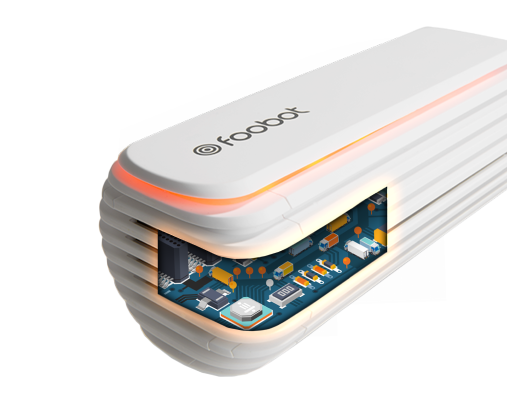How long does it take to create an IoT product?

There’s a ubiquitous phrase that you’ve probably heard before:
“Failing to prepare is preparing to fail.”
While the first utterance of this phrase is lost to history, it’s easy to know why the sentiment has stood the test of time. It can be applied to almost any venture, and that includes creating an IoT product.
Creating an IoT product takes a lot of planning, and there are many steps to follow to ensure your end-product passes those all-important certification tests and impresses your customers. This can be a little bit daunting, but it doesn’t have to be.
In this article, we’ll cover how long it takes to create an IoT product from start to finish–including every step involved in the process.
Defining your target audience
Before you make a start, you need to determine who your target audience will be, and also calculate their need for an IoT product. It’s important to make sure that the demand is there. After all, if there is no demand for your product then no one will purchase it.
Spend some time gathering information from existing customers to find out what they want and/or need from your IoT product. You should also send surveys further afield to people who fit the criteria of your ideal target audience. There are several useful tools, like Typeform or SurveyMonkey, that not only allow you to build custom surveys but also help you to send them out to a targeted pool of potential customers.
Creating an IoT product from scratch
There’s never been a better time to jump aboard the IoT train! The demand for connectivity by consumers is stronger than ever. It’s so strong that previously connectivity-free zones, like the Underground, are now changing due to customer demand.
If we were to give you a rough estimate of how long it takes to create an IoT product, we’d say around 18 months. Of course, this is just a rule of thumb and the time can vary greatly from product to product.
This 18-month process can be split into 7 steps. Each one will need to be completed in order to move forward to the next stage. Here, we’ll take a look at these steps in detail so you can better gauge how long it will take to create your IoT product–from scratch.
1. Pre-Project
After discovering that your target audience wants an IoT product, you need to jump into the pre-project planning. This involves ideation, defining goals and asking yourself a lot of questions about what your customers specifically want and need from your product. Here are some things to think about:
- What do your customers expect from your IoT product?
- What do you want your new IoT product to achieve for your business?
- How is it going to help you and/or your customers?
- What do you want your product to look like?
- What will the specifications be?
Although it may feel like nothing tangible is happening at this stage, the pre-project discussions and brainstorms that you have will determine everything that you do going forward. It’s important to take this time to generate a clear focus of what you want to create and achieve.
2. Enclosure Design and Electrical Engineering
As you can see, this step is broken into two parts. There’s enclosure design and electrical engineering–both of which are very important when it comes to creating an IoT product. The reason for these sub-steps is that these phases typically work in conjunction with one another.
2a. Enclosure Design
Depending on what kind of IoT product you’re creating, you may need to design a great-looking enclosure that will appeal to your customers. Of course, if your IoT product isn’t going to be customer-facing or if you are simply looking to connect your existing HVAC system to the internet, then you can spend less time on the look of your design and just focus on the practicality.
When creating an IoT product from scratch, it’s important that it looks good and will appeal to your target audience. Most IoT enclosures are created by injection molding. This is the process of using molten material, most commonly thermoplastic, to create the enclosure.
It’s important to know early whether your product will need a new casing or not because molds are expensive and can take a while to build. The entire production batch can be affected by the delivery date of the molds.
In addition to looking good, your enclosure may need to provide mechanical properties to the product and will also need to take into account the PCB design and certification standards. For example, depending on the voltage level, the distance between the PCB and the enclosure will vary.

Mock-up of Foobot’s enclosure and the PCB within.
2b. Electrical Engineering
The most important part of this step is the electronic board, also known as the printed circuit board (PCB). When designing a PCB, you must first create an electronic circuit that is capable of meeting your specifications. Most likely, this circuit will include components that need to be programmed.
From there, you’ll place the components onto the PCB in a way that complies with certification standards and also the standards of your company. It’s absolutely critical for the PCB to meet the regulations of the countries where the product will be sold. As such, it is best to carry out tests at this stage to ensure you will pass the certification test at the end of the process.
3. Embedded Software
In order for your IoT product to actually work the way you want it to, and for it to connect to the internet, you need some embedded software running through the product. This is the key component that connects your hardware to the Cloud.
Embedded software can manage:
- Recalibration instructions
- Software update installation
- Sensor data processing
- Real-time behavior
For more information, click here.
4. Cloud Software
This is the online software with which the embedded software connects and it allows you to create a stronger IoT product. By storing your data in the cloud you can ensure that it is secure and can be retrieved from anywhere.
Cloud software also makes it really easy to update your IoT system if you ever need to, and analyze the performance so that you can make improvements in the future.
For more information specifically about the cloud — and how this can affect production lead time — check out our article “How to choose the right IoT platform”.
5. Front End/App Design
From your initial research, it should be clear whether you need to design an app to partner with your IoT product. The app is the tool that your end user will use to manage your IoT product.
In some cases, such as an in-duct connected HVAC product, you may not need an app. Instead, a rough dashboard for the manufacturer would suffice, and this would reduce the length of your project.
However, if your IoT product is customer facing then you need to make sure the front end of your app looks good and is user-friendly. Customers will likely be interacting with this part of your IoT product the most, so it’s important to make something that is intuitive but also convenient enough to slot into their daily routine.

Foobot’s companion app.
Don’t be afraid to spend extra time on getting the UX (user experience) just right. And recruit existing or prospective customers as beta testers to gather honest feedback about what does and doesn’t work.
6. Industrialization
This is where everything comes together! You’ll need to find a factory that can assemble your IoT product, including adding software, testing, and ensuring quality. It’s important to ensure that your product is unique and made to the standards you require, so it helps to work with a factory that you can visit.
But before creating a batch of millions of units, you need to make sure your great new products will be compliant with the standards ruling in your targeted markets. That’s when certifications come in, you’ll need to pass these certifications tests with the first small batch of units.
7. Certifications
Finally, the final step of creating your IoT product is conducting accredited labs tests and submitting the results to state organizations to ensure your compliance. In the US, it is mandatory to meet the standards of the FCC and also strongly recommended to meet UL guidelines, whereas in the EU, you need to meet CE standards.
It’s important to reach this step with certainty and confidence in your product. Failing the certification tests could send you all the way back to the drawing board–costing a lot of time and money.
Depending on the nature of your product and/or market, this step can be swift or last several months. For example, if you’re creating a connected A/C unit then you’ll probably need less time and effort to acquire certifications than if you were, say, creating a connected fire alarm that your customers’ safety depends on.
Final Thoughts
It’s difficult to give a definitive answer to the question: How long does it take to create an IoT product?
IoT products vary immensely from industry to industry, and so does the time it takes to create them. Our ballpark figure of 18 months is a good estimate to stick to, but the main thing to remember is not to rush it. You want your IoT product to work well and last well, and that means taking your time to make sure you create an amazing product.
